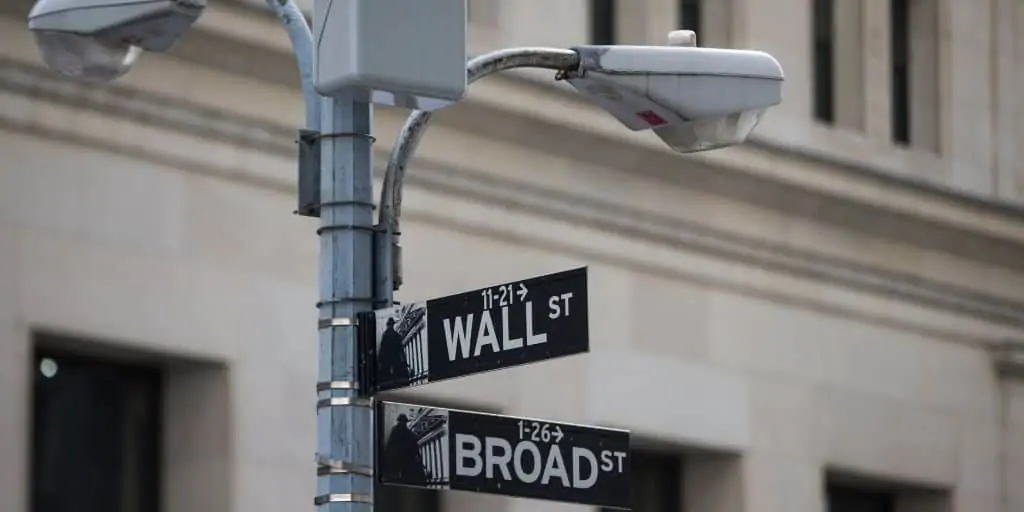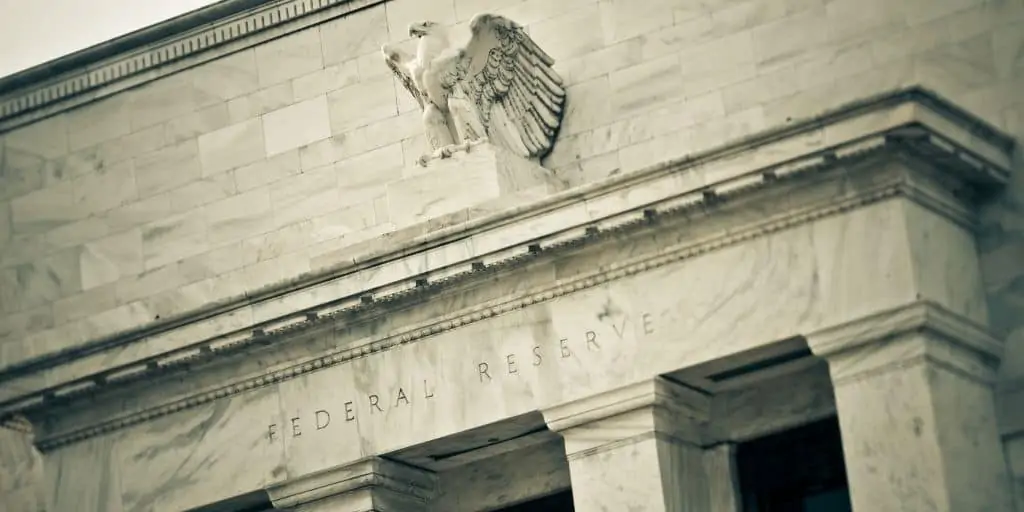What Is Prime Rate?
REtipster does not provide tax, investment, or financial advice. Always seek the help of a licensed financial professional before taking action.
What Is the Prime Rate?
Prime rate is the interest rate that banks use[1], equivalent to the interest rate they charge to their best, most creditworthy customers. As such, getting the prime rate when a borrower takes out a loan is the best possible rate for that loan.

Most financial consumer products, such as credit cards, home equity lines of credit, or short-term loans, are based on the prime rate, thus making the prime rate a benchmark or an index. If the prime rate changes, so does the interest rate on these products if they use a variable-rate interest[2].
Although the prime rate is an index for consumer products, it is itself based on the federal funds rate, which is controlled by a committee of the Federal Reserve.
Every bank can set its own prime rate, but for convenience’s sake, they usually base it on the U.S. Prime Rate, from Wall Street Journal’s “Money Rates” column.
The WSJ Prime Rate
Each business day, the Wall Street Journal comes up with an average of the prime rates charged by the 10 largest banks in the United States. Colloquially known as the “U.S. Prime Rate,” this rate is about 300 basis points (or 3%) higher than the fed funds rate.
The Wall Street Journal collates the interest rates of short-term loans charged to these banks’ most creditworthy customers. To arrive at this figure, the WSJ conducts a survey with these banks and averages them to arrive at the prime rate it publishes[3].
The Federal Funds Rate
Whether a bank develops its own prime rate or bases it on the U.S. Prime, they are still tied to another index, called the federal funds rate (also called the “overnight rate”)[4]. This is a rate that the Federal Reserve uses to control the supply of money in the economy.
Many banks base their prime rates partly on the Fed’s target level of the federal funds rate. The Federal Open Market Committee (FOMC), a Federal Reserve body, determines this rate based on the interest rate that banks charge among themselves for short-term or overnight loans to fulfill reserve requirements[5].
The FOMC, in setting the Fed’s monetary policy, usually meets eight times a year (every six or seven weeks). Determining the federal funds rate is typically among the agenda[6].
They can also report the prime rate posted by the 25 largest U.S. banks. This is reported daily, except on holidays, in the Fed’s H.15 statistical release, “Selected Interest Rates,” along with other data like Treasury bill rates, although this is solely for analysis and has no policy-making power.
BY THE NUMBERS: The FOMC has 12 members composed of the seven members of the Board of Governors of the Federal Reserve System, the president of the Federal Reserve Bank of New York, and four rotated yearly from the remaining 11 Reserve Bank presidents.
Source: Federal Reserve
When to Expect a Prime Rate Adjustment
Financial analysts monitor the regular meetings of the FOMC, especially in times of economic uncertainty. After the meeting, this body may announce rate adjustments on the federal funds rate, generally forcing prime rates to follow suit.
If the FOMC hikes the federal funds rate, an immediate spike in the banks’ prime rates can be expected[7]. Conversely, a reduction in the fed rate can result in lower prime rates.
How Often Do Banks Adjust Their Prime Rates?
Theoretically, banks can adjust their prime rate at any time. In practice, however, it is quite common for prime rates to remain at a steady level for years.
Banks tend to revise their prime rates only when there is a significant shift in the federal funds rate. Such disruption occurs during major financial shifts like the 2007 – 2009 Great Recession and the 2020 Covid-19 pandemic. These macroeconomic events that trigger adjustments in the federal funds rate also impact the banks’ prime rates[8].
Note that there is no limit to how high prime rates can go. For example, in 1980, the Fed tallied its record-high prime rate of 21.5%. On the other hand, 3.25% is essentially the “floor” or the lowest the U.S. Prime Rate can go[9].
Factors That Affect Prime Rate Adjustment
The factors impacting the fed funds rate, and consequently, the prime rate, include the following[10]:
- Accelerating inflation. Prices of consumer goods and doing business naturally increase over time, but a sharp climb can hurt the economy. Runaway inflation can squeeze profit margins and cause unemployment. In this scenario, the Fed can raise its federal funds rate to temper economic activity and help curb rapid inflation. Raising the fed funds rate likewise increases the prime rate.
- Declining consumer activity. High interest rates can contribute to waning consumer confidence, which the Fed can address by lowering its federal funds rate. Such reduction also reduces the prime rate, stimulating consumer spending by allowing consumers to obtain new loans with lower rates or refinance their existing ones.
- Credit issues and liquidity concerns. A regime of rising prime rates can exert pressure on banks’ profit margins and cash reserves. If unchecked, this will lead to a credit crunch and reduced lending across the entire economy. The Fed may lower its rates to help trigger a prime rate cut. This reduction will encourage interbank lending, ensuring ample bank cash flows for lending to consumers and small businesses.
- Rising unemployment. A reduction in the federal funds rate can help mitigate rising unemployment. The consequent cut in banks’ prime rates enables companies to borrow money at better loan terms to grow their businesses quickly. More jobs can be created in the process.
- Unhealthy default rates[11]. The Federal Reserve may be convinced to lower its federal funds rate to address a rising number of loan defaults in the market. A high rate of loan defaults will hurt the country’s banking system, as the banks will have to repay the outstanding loan obligations. A federal funds rate cut will thus help banks and their borrowers avoid loan defaults.
Takeaways
- The prime rate is the interest rate that banks charge to their best and most creditworthy customers.
- It is derived from the federal funds rate, the interest rate set by the Federal Reserve, although most banks use the Wall Street Journal prime rate since it averages the prime rates of the 10 largest banks in the United States.
- Lenders use the prime rate as the basis for the interest rates on financial products, such as credit cards, making the prime rate a benchmark or index.
Sources
- Hagen, K. (2021.) What Is the Prime Rate? The Ascent. Retrieved from https://www.fool.com/the-ascent/banks/articles/what-is-the-prime-rate/
- Lockert, M. (2021.) What Is the Prime Rate? Credit Karma. Retrieved from https://www.creditkarma.com/credit-cards/i/prime-rate
- Kagan, J. (2021.) WSJ Prime Rate. Investopedia. Retrieved from https://www.investopedia.com/terms/w/wall-street-journal-prime-rate.asp
- Corporate Finance Institute. (n.d.) What Is the Prime Rate? Retrieved from https://corporatefinanceinstitute.com/resources/knowledge/finance/prime-rate
- Frequently Asked Questions. (n.d.) What Is the Prime Rate, and Does the Federal Reserve Set the Prime Rate? The Federal Reserve System. Retrieved from: https://www.federalreserve.gov/faqs/credit_12846.htm
- Federal Reserve of New York. (n.d.) Federal Open Market Committee. Retrieved from https://www.newyorkfed.org/aboutthefed/fedpoint/fed48.html
- Baldwin, J.G. (2021.) Interest Rates Affect the Ability of Consumers and Businesses to Access Credit. Investopedia. Retrieved from https://www.investopedia.com/articles/investing/010616/impact-fed-interest-rate-hike.asp
- Steinberg, S. (2021.) Prime Rate: What It Is and How It Affects You. Rocket Mortgage. Retrieved from https://www.rocketmortgage.com/learn/prime-rate
- Fed Prime Rate. (n.d.) Prime Rate: Frequently Asked Questions (FAQ). Retrieved from http://www.fedprimerate.com/prime-rate-faq.htm
- Ingram, D. (n.d.) Reasons for Change in Prime Interest Rates. Chron. Retrieved from https://smallbusiness.chron.com/reasons-change-prime-interest-rate-3642.html
- Financial Web. (n.d.) Four Factors That Affect Current Prime Rate. Retrieved from https://www.finweb.com/loans/4-factors-that-affect-the-current-prime-rate.html







